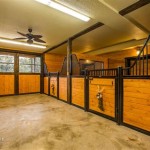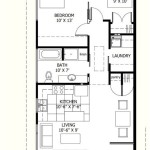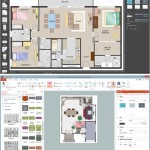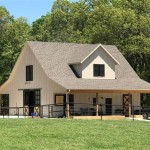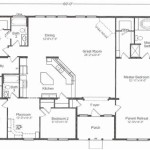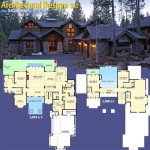House Plan With In-Law Suite: Design Considerations and Benefits
The demand for homes with in-law suites, also known as accessory dwelling units (ADUs) or multigenerational living spaces, has significantly increased in recent years. This trend is driven by various factors, including aging populations, rising housing costs, and the desire to provide care for family members while maintaining a degree of independence. Effectively integrating an in-law suite into a house plan requires careful planning and consideration of various design elements to ensure the comfort, privacy, and accessibility of all residents.
A well-designed house plan with an in-law suite offers a practical solution for accommodating multiple generations or providing rental income. However, the design process necessitates a thorough understanding of the specific needs of the intended occupants, compliance with local building codes, and a strategic approach to space allocation and functionality. This article explores key design considerations and benefits associated with house plans incorporating in-law suites.
Functional Needs and Accessibility
The primary consideration when designing a house plan with an in-law suite is to address the functional needs and accessibility requirements of its occupants. This involves a detailed assessment of their physical capabilities, lifestyle preferences, and long-term care needs. This proactive approach is crucial for creating a space that is both comfortable and practical for daily living. Accessibility features, in particular, play a vital role in ensuring the safety and independence of elderly or mobility-impaired individuals.
Key accessibility features to incorporate into the design include wider doorways and hallways to accommodate wheelchairs or walkers. This requires a minimum clear width of 36 inches for doorways and 42 inches for hallways. Ramps or zero-threshold entries should be considered to eliminate steps and provide seamless access to the suite. Grab bars should be strategically placed in bathrooms, particularly near the toilet and shower, to provide support and prevent falls. Lever-style door handles and rocker light switches are easier to operate for individuals with limited dexterity. Adjustable countertops, sinks, and cooktops can also enhance accessibility in the kitchen area.
Beyond physical accessibility, consider assistive technology integration. This could include voice-activated controls for lighting, temperature, and security systems. Additionally, emergency call systems with direct communication to caregivers or emergency services can provide an added layer of safety and security. Thoughtful planning for future adaptability ensures the in-law suite can accommodate changing needs over time.
The functional needs extend beyond accessibility. Consider the daily routines and preferences of the intended occupants. For example, individuals who enjoy cooking may require a fully equipped kitchen, while those who prioritize relaxation may benefit from a private outdoor space. A thorough understanding of these needs will inform the layout and design of the suite, ensuring it is tailored to the specific requirements of its residents.
Privacy and Separation
Maintaining privacy and fostering a sense of independence is paramount in a multigenerational living arrangement. A well-designed house plan with an in-law suite should incorporate features that provide clear separation between the main living area and the suite. This separation contributes to the psychological well-being of all residents, fostering a sense of autonomy and personal space.
A separate entrance is crucial for maintaining privacy and preventing constant interaction between residents. This entrance should be easily accessible and clearly marked for the occupants of the in-law suite. Soundproofing is another important consideration. Walls and ceilings should be properly insulated to minimize noise transfer between the main house and the suite. Solid-core doors can also help to reduce noise transmission. Consider the placement of windows and doors to minimize visual intrusion and maximize privacy.
Strategic landscaping can also enhance privacy. Planting trees or shrubs along property lines can create a natural barrier, shielding the in-law suite from view and providing a sense of seclusion. Fencing can also be used to define property lines and create a physical separation between the main house and the suite. The use of opaque or frosted glass in windows can further enhance privacy while still allowing natural light to enter the space.
The internal layout of the in-law suite should also be designed to maximize privacy. The bedroom and bathroom should be located away from common areas to minimize noise and disruption. A dedicated living space, separate from the kitchen, provides a place for residents to relax and entertain guests without intruding on the privacy of the main house. This separation helps create a feeling of independence and allows residents to maintain their own routines and social lives.
Careful consideration should be given to shared spaces, such as laundry facilities or outdoor areas. If these spaces are shared, clear guidelines should be established to ensure that all residents have equal access and privacy. Scheduling access to shared facilities can help prevent conflicts and maintain a sense of order. Alternatively, providing separate laundry facilities for the in-law suite can further enhance independence and privacy.
Layout and Space Optimization
Optimizing the layout and space within the in-law suite is essential for creating a functional and comfortable living environment. The size and configuration of the suite will depend on the available space, the needs of the occupants, and local zoning regulations. A well-designed layout should maximize the use of space while providing adequate room for all essential activities, such as sleeping, cooking, and relaxing.
The in-law suite should ideally include a bedroom, bathroom, kitchen, and living area. The size of each space will vary depending on the number of occupants and their specific needs. The bedroom should be large enough to accommodate a bed, dresser, and other essential furniture. The bathroom should include a toilet, sink, and shower or bathtub. The kitchen should be equipped with a refrigerator, stove, microwave, and sink. The living area should provide a comfortable space for relaxing and entertaining guests.
Consider a flexible design approach to maximize space utilization. This might include incorporating multi-functional furniture, such as sofa beds or convertible tables. Built-in storage solutions, such as shelving units or cabinets, can also help to maximize space and minimize clutter. The use of open floor plans can create a sense of spaciousness, even in smaller suites. Carefully consider the placement of furniture and appliances to ensure that the space is both functional and aesthetically pleasing.
Natural light and ventilation are also important considerations for creating a comfortable living environment. Maximize natural light by incorporating large windows and skylights. Ensure adequate ventilation by providing operable windows and exhaust fans in the kitchen and bathroom. Proper lighting can also enhance the functionality and aesthetics of the space. Use a combination of ambient, task, and accent lighting to create a well-lit and inviting environment. Consider using energy-efficient lighting fixtures to reduce energy consumption and lower utility bills.
The orientation of the in-law suite can also impact its functionality and comfort. Consider the direction of sunlight when planning the layout of the suite. Orienting the living area towards the south can maximize sunlight exposure during the winter months, while orienting the bedroom towards the east can provide natural light in the morning. Avoid orienting the suite towards the west, as this can result in excessive heat gain during the summer months. The placement of windows and doors should also be considered to maximize privacy and minimize noise.
In addition to the internal layout, consider the relationship between the in-law suite and the surrounding outdoor space. A private patio or garden can provide residents with a place to relax and enjoy the outdoors. A separate entrance to the backyard can also enhance privacy and independence. Consider the accessibility of the outdoor space, ensuring that it is easily accessible for residents with mobility limitations.
When designing an in-law suite, it's crucial to consult with a qualified architect or designer who has experience in multigenerational living spaces. These professionals can provide valuable insights and guidance, helping you to create a house plan that meets the specific needs of your family while also complying with local building codes and regulations.

Southern Style House Plan With In Law Suite

House Plan 65862 Tuscan Style With 2091 Sq Ft 3 Bed 2 Bath 1

In Law Suite Plans Give Mom Space And Keep Yours The House Designers

Impressive Home Plans With Inlaw Suites 8 House In Law Suite Floor Modular One Story Multigenerational

Homes With Mother In Law Suites

House Plans With In Law Suites Houseplans Blog Com

Modern Farmhouse Plan With In Law Suite 70607mk Architectural Designs House Plans

Updated Farmhouse Style House Plan 7382 Pinecone Trail

Front Side View House Plans With A Separate In Law Suite

Cape Cod House Plans With Inlaw Suite Best Of Mother In New Multigenerational Country


